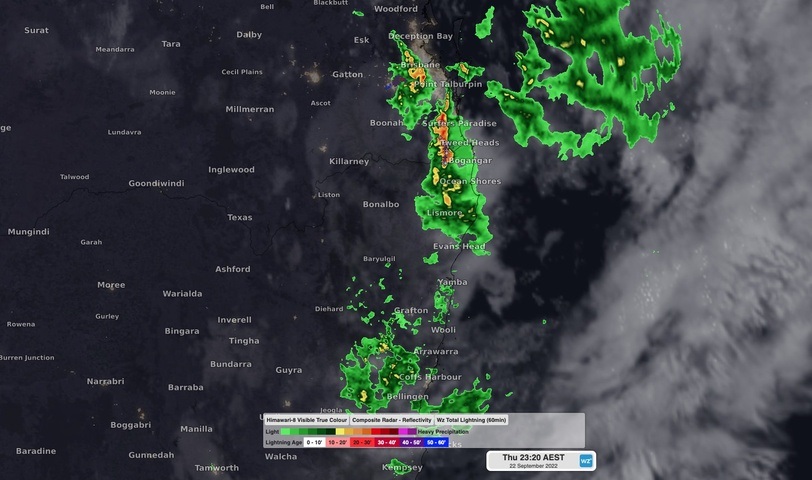Parts of northeast NSW and southeast QLD were inundated by torrential rain on Thursday night, with some places collecting more than 300 mm during a barrage of thunderstorms.
A deepening low pressure system interacting with copious moisture and an unstable atmosphere produced a sustained period of heavy rain and thunderstorms over northeast NSW and southeast QLD on Thursday night into Friday morning.
The heaviest rain occurred in the hinterland region near the QLD/NSW border, where near-stationary thunderstorms delivered several hours of torrential rain that caused flash flooding.
Rain gauges at Upper Springbrook in QLD and Couchy Creek in NSW collected a whopping 222 mm in just three hours late on Thursday night. By 9am on Friday, Couchy Creek had amassed 291 mm during the past 24 hours and Upper Springbrook had collected 317 mm.
Another rain gauge near Clagiraba in QLD received 104 mm in just one hour on Thursday night.

This intense rainfall caused minor to moderate flooding in some areas and triggered numerous warnings for flooding, heavy rain and severe thunderstorms.
Heavy rain and storms will remain a threat in northeast NSW and southeast QLD on Friday morning, before rain eases into the afternoon as the low pressure system moves offshore.
This weather system has also caused flooding over other areas of NSW and southern QLD during the last two to three days. Check the latest warnings for the most up-to-date information on current and future flooding.
For more information on our products or how we can help you with your business needs, please contact us at apac.sales@dtn.com.






